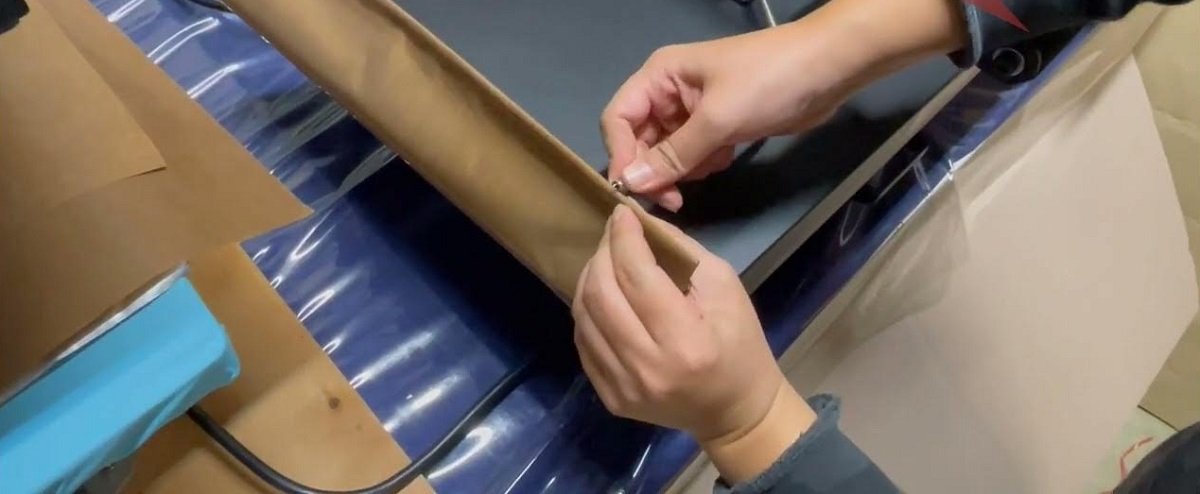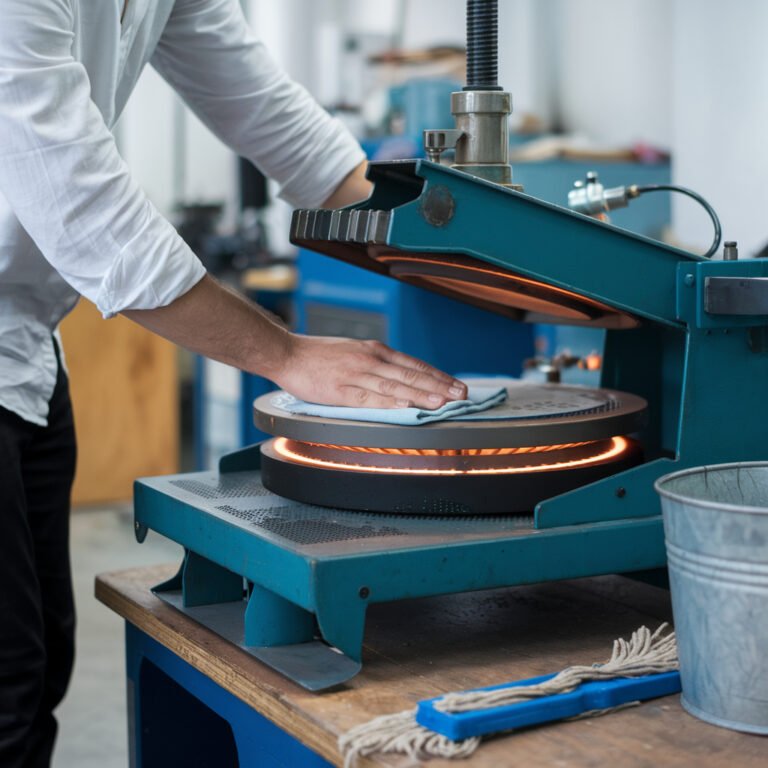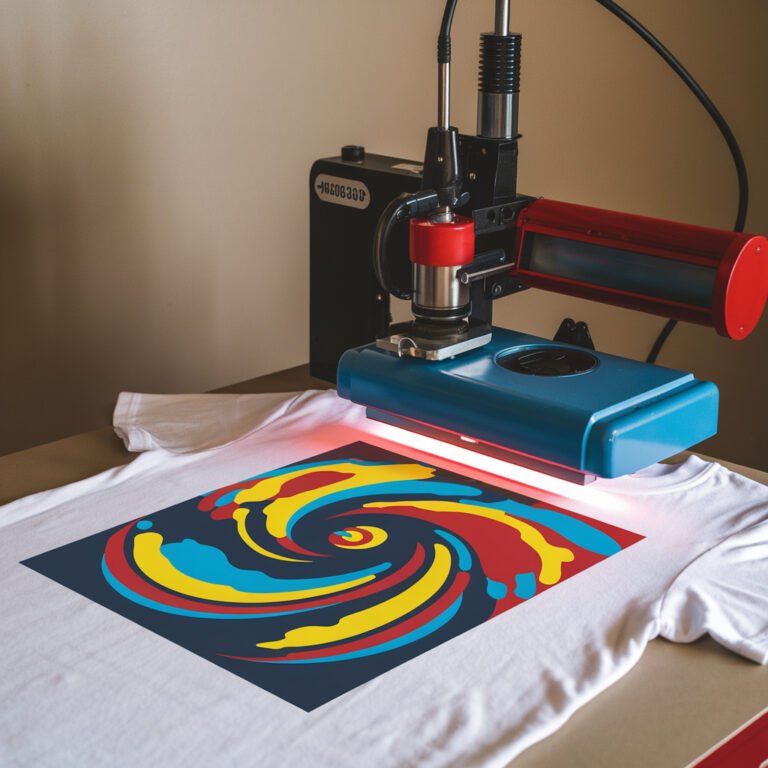How to Make a Custom Heat Press Cover Teflon
To make a custom Teflon heat press cover, first measure your heat press’s top plate accurately, including its depth and any non-standard shapes. Then, find Teflon fabric and cut it to match your measurements—double-check for accuracy. Once cut, you can assemble the cover.
Consider adding fasteners or features that secure the cover to the press, ensuring it stays in place. After you’ve assembled it, test the cover for fit and functionality. Regularly maintain by cleaning it after each use and checking for signs of wear.
The right cover can lead to higher quality prints, so there’s more to gain from proper usage and care.
What Materials Do You Need to Clean a Vevor Heat Press?
To clean your Vevor Heat Press effectively, you’ll need a few basic materials: non-abrasive cloths, mild detergent, and high-temperature resistant gloves. It’s crucial to use non-abrasive cloths to avoid scratching the surface of your heat press. A soft microfiber cloth works best as it picks up dirt without causing any damage.
Choosing the right detergent is also key. You’ll want to opt for a mild, non-toxic detergent to ensure that it doesn’t harm the heat press’s elements or coatings. Ensure the detergent is diluted according to the manufacturer’s instructions to avoid any residue build-up that could affect the machine’s performance.
High-temperature resistant gloves are essential not only for protection from heat but also to give you a firm grip while cleaning. This prevents any slipping that might occur due to the sleek surfaces of the machine.
Additionally, you might find it helpful to have a small brush or an old toothbrush on hand. These can get into the smaller crevices and around buttons where lint and dirt might accumulate. Just make sure the bristles are soft to avoid scratches. With these tools, you’re set to keep your Vevor Heat Press in top-notch condition.
Step-by-Step Guide to Make a Custom Heat Press Cover Teflon

Let’s get started on crafting your custom heat press cover with Teflon. First, you’ll need to accurately measure your heat press to ensure the cover fits perfectly. Then, cut the Teflon fabric according to these dimensions, keeping in mind the need for any fasteners or securing features that will hold the cover in place.
Measure Your Heat Press
Before you begin crafting your custom Teflon cover, you’ll need to accurately measure your heat press. This step is crucial to ensure that the cover fits perfectly and provides optimal protection during use. Start by measuring the top plate of your heat press, as this is typically where the Teflon cover will be applied. You’ll want to use a reliable tape measure to determine the length and width of the plate.
Make sure to note down these measurements precisely. If your heat press has a non-standard shape or additional elements like handles or curves, it’s important to account for these in your measurements. You may need to measure these parts separately to ensure the cover will accommodate all features without restricting functionality.
Additionally, don’t forget to measure the depth of the top plate. Knowing the depth will help you understand how much Teflon material is required to cover the sides adequately. This is particularly important if the heat press closes tightly, as you’ll want to avoid any gaps that could expose parts of the press to heat.
Once you’ve gathered all your measurements, double-check them to ensure accuracy before moving on to the next steps of your project.
Cut the Teflon Fabric
Once you’ve measured your heat press, it’s time to cut the Teflon fabric according to your dimensions. Lay the fabric flat on a large, clean surface. You’ll need a sharp pair of scissors or a rotary cutter for precision. It’s crucial that your cuts are straight and clean to ensure your cover fits snugly and functions properly.
Before you start cutting, double-check your measurements. It’s always better to measure twice and cut once! Mark your cutting lines directly on the Teflon fabric using a non-permanent, visible marker. This will guide you to make accurate cuts. Here’s a table with suggested tools and tips to help you through this process:
| Tool | Purpose | Tip |
|---|---|---|
| Tape Measure | For accurate fabric measurement | Keep it tight for precise numbers |
| Marker | To mark the fabric | Use light marks to avoid stains |
| Scissors/Rotary Cutter | To cut the fabric | Keep blades sharp for clean cuts |
Make sure your workspace is well-lit and free from distractions. Take your time while cutting; rushed work often leads to mistakes. After cutting, you should have a piece of Teflon fabric shaped to match the top and sides of your heat press. Don’t worry about finishing edges just yet—that comes later in the process.
Assemble the Cover
After cutting the Teflon fabric, you’ll now stitch the pieces together to form your custom heat press cover. Begin by laying out the cut pieces on a flat surface to ensure they align properly. You’re aiming for precision here, as any misalignment could affect the functionality of the cover.
Start with the larger sections of your cover. If your design includes a top and bottom piece, align these first. Pin them together along the edges where they’ll join. This will keep the fabric from shifting as you sew. You’ll want to use a high-temperature resistant thread for stitching, as regular thread might not withstand the heat from the press.
Using a sewing machine set to a medium-length straight stitch, begin sewing along the pinned edges. Take your time and ensure your stitches are even. This isn’t just about aesthetics; uneven stitching can lead to weak spots in the cover where heat might escape.
Once the main pieces are stitched together, iron the seams flat. This helps to reinforce the stitches and gives your cover a finished look. Remember, the iron should be set to a low temperature to prevent damage to the Teflon.
Now, your cover is starting to take shape, ready for the next steps in creating a fully functional custom heat press cover.
Add Fasteners or Securing Features
Now that your cover’s main sections are stitched, it’s time to add fasteners or other securing features to ensure it stays in place during use. You’ll need to choose fasteners that can withstand the heat and pressure of the heat press. Velcro, snaps, and hooks are all excellent options, each offering different benefits depending on your specific needs.
First, consider Velcro for its ease of use and adjustability. Measure and cut strips of Velcro. Attach one side to the cover’s edges and the corresponding side to the heat press itself, ensuring they align perfectly for a secure fit.
If you prefer snaps, they offer a more permanent solution. Mark the placement of the snaps carefully on both the cover and the press. Use a snap setting tool to attach them, ensuring they’re tightly fixed to withstand frequent usage.
Hooks can also be used, especially if you want a quick and simple way to remove the cover. Sew hooks into the cover’s edges, and attach small loops or eyelets on the press where the hooks can easily latch on.
Choose the securing method that best suits your heat press and usage frequency, ensuring your cover remains perfectly in place during operations.
Test the Fit and Functionality
Before using your heat press, it’s crucial to test the cover’s fit and functionality to ensure it meets your needs. Start by placing the Teflon cover you’ve crafted over your heat press. It should fit snugly without any loose areas. If it’s too tight or too loose, you might need to adjust the dimensions or fasteners based on your model.
Next, check all the fasteners or securing features you’ve added. These should hold the cover firmly in place to prevent it from shifting during operation. If they’re not secure, reinforce them now to avoid any future issues.
Now, it’s time to test the heat resistance and non-stick functionality. Heat your press to a low temperature initially, and carefully monitor how the cover reacts. It shouldn’t melt or deform. Gradually increase the heat to your typical working temperature. Observe if the cover maintains its integrity without sticking to the heat press or the materials you’re working with.
After the heat test, inspect the cover for any signs of wear or damage. If everything looks good, your custom Teflon cover is ready to use! This testing phase ensures your crafting sessions will be safer and more efficient.
Maintenance Tips for Your Teflon Heat Press Cover
To extend your Teflon heat press cover’s lifespan, it’s crucial to clean it regularly. After each use, wait for the cover to cool down completely before wiping it down with a soft, damp cloth. If you’ve been working with particularly messy materials, you might need a bit of mild soap. Just make sure you rinse all the soap off to avoid any residue.
Don’t underestimate the importance of checking for wear and tear. You’re looking for any thinning spots, discoloration, or even small tears that can affect the cover’s effectiveness. If you spot these early, you can patch things up before they get worse. For minor repairs, a bit of Teflon tape can work wonders.
Also, avoid using harsh chemicals or abrasive tools like steel wool, as these can scratch or degrade the Teflon coating. Such damages can not only shorten the lifespan of your cover but can also transfer unwanted textures onto your printing projects.
Lastly, when you’re not using your heat press, consider storing the cover separately in a clean, dry place. This prevents accidental scuffs and keeps it ready for your next project. Proper storage and regular maintenance will keep your Teflon cover in great shape, ensuring consistently high-quality results.
Frequently Asked Questions
Can I Use a Homemade Teflon Cover on Any Brand of Heat Press?
Yes, you can generally use a homemade Teflon cover on any brand of heat press. Just make sure it’s the right size and thickness to avoid any issues with heat distribution or damage to the press. It’s important to ensure that the Teflon sheet is securely attached and doesn’t shift during use.
This will help protect your machine and ensure consistent results across different types of projects. Always test it first on a small project.
Is a Thicker Teflon Material Better for Heat Press Covers?
When considering whether a thicker Teflon material is better for heat press covers, it’s all about balancing durability and heat transfer. Thicker Teflon tends to be more durable and can better protect your heat press and fabrics.
However, it might slightly reduce the heat transfer efficiency. You’ll want to find a thickness that offers a good protection level without compromising the heat transfer necessary for high-quality printing.
How Does a Teflon Cover Affect Heat Transfer Quality?
When you use a Teflon cover on your heat press, it impacts the quality of heat transfer significantly. The cover distributes the heat more evenly and prevents scorching, ensuring your designs are crisp and clear. It also acts as a protective barrier, reducing wear and tear on the heat press itself.
You’ll notice fewer inconsistencies in your pressed items, leading to a more professional finish on all your projects.
Are There Eco-Friendly Alternatives to Teflon for Heat Press Covers?
You’re in luck if you’re exploring eco-friendly alternatives to Teflon for your heat press cover. Materials like silicone and PTFE-coated fiberglass offer similar non-stick and heat-resistant properties without the environmental impact of traditional Teflon.
These options are not only better for the planet but also maintain high-quality results in heat transfer applications. It’s worth considering these sustainable choices to reduce your environmental footprint while continuing your pressing projects.
Can I Repair a Torn Teflon Heat Press Cover?
If you’ve torn your heat press cover, fixing it can be tricky due to Teflon’s unique properties. It’s often best to replace it, but if you’re in a pinch, you can try using a Teflon patch and heat-resistant adhesive. Make sure to clean the area thoroughly and apply the patch smoothly to avoid any bumps.
However, keep in mind that this is a temporary solution and might not withstand high temperatures for long.
Conclusion
Now that you’ve crafted your custom Teflon cover for your Vevor heat press, you’re all set to keep it looking and working like new. Just remember to gently clean it regularly and handle it with care to avoid scratches or tears.
With this handy cover, you’ll extend the life of your press and ensure it delivers top-notch results every time. So, go ahead, get pressing and enjoy the smooth, protected performance your new Teflon cover provides!





